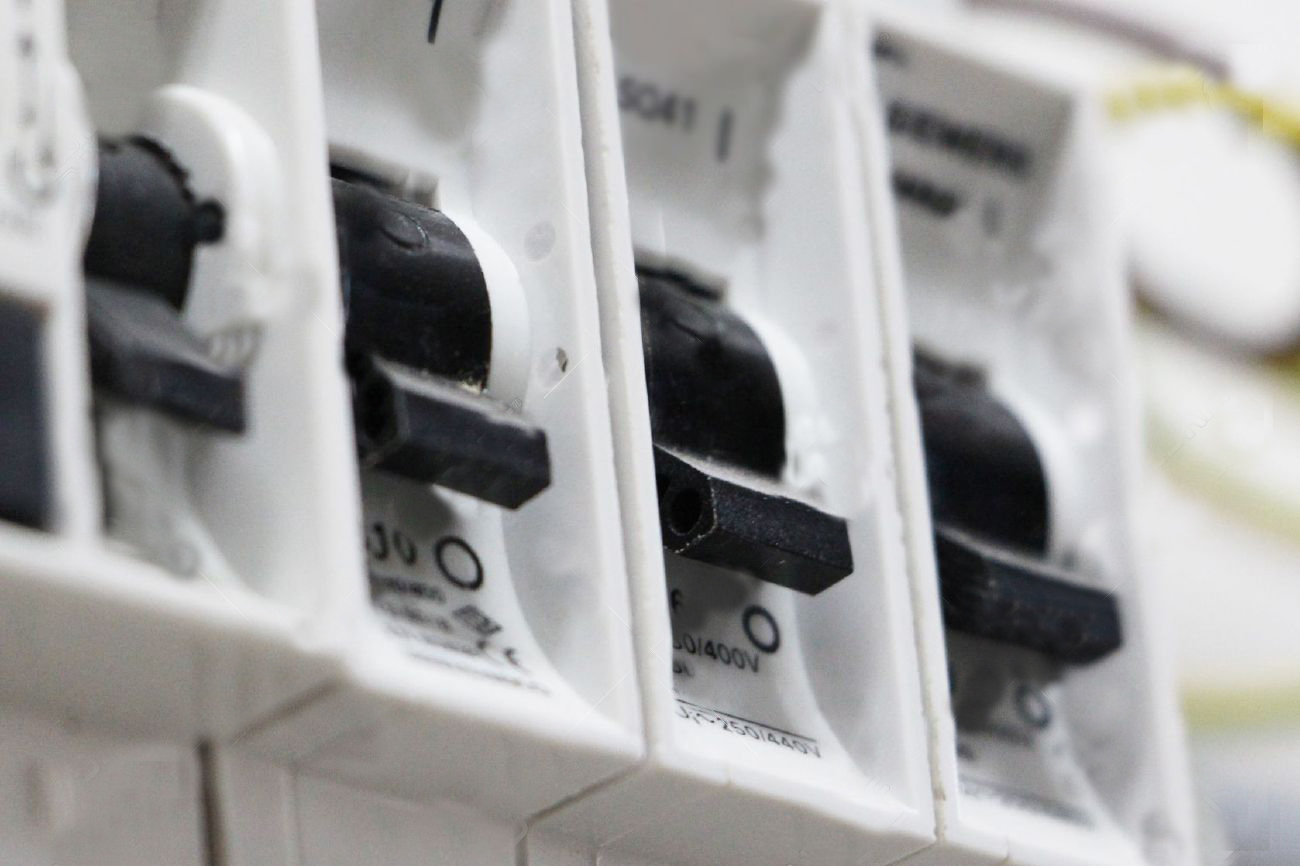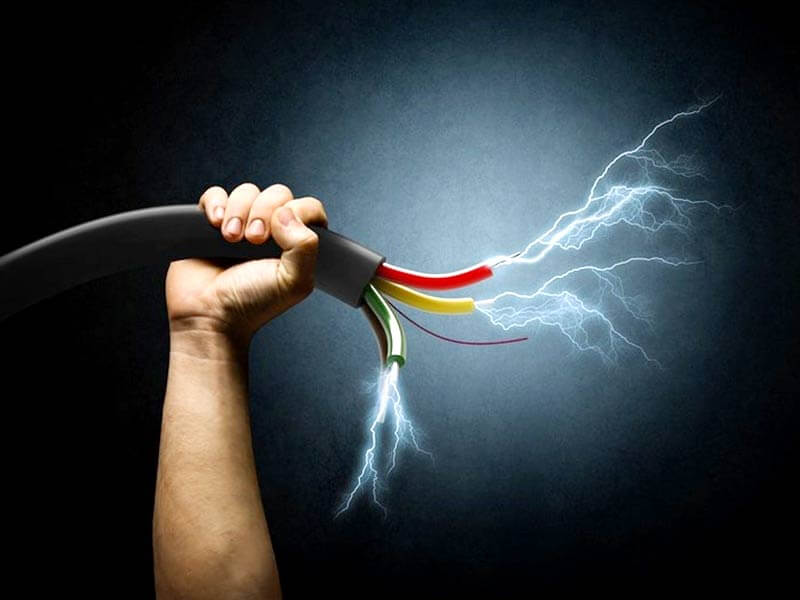The Most Common Electrical Issues Around The Home
Electricity should be seen as a tool and the ways that we can use it are endless. But we can’t forget just how dangerous it can be when installed incorrectly, not properly maintained or used without care. Issues such as flickering light, tripping circuit breakers, electric shocks and much more, all indicate possible points of concern with your home’s electrical circuit. If you are experiencing any of the following issues, please call us today to have them inspected to ensure your’s and your family’s safety.
1. Tripping Circuit Breakers
Many people are unsure about the difference between safety switches and circuit breakers within their home. Circuit breakers provide protection for your WIRING and ELECTRICALS within your home by opening the circuit when a fault is detected. They do not provide personal protection from electric shock. There are three main reasons why your circuit breaker might trip within your home.
One of the most common reasons is that you are ‘overloading your circuit’. This is an electric circuit that is carrying more current than what it can handle, running the risk of causing a fire or an injury through overheating. For example, in one outlet you may have a powerboard plugged in, that is overloaded with cords and adaptors that, simultaneously, are drawing too much current. Your outlet/powerboard may not be able to handle such a large current and therefore runs the risk of overheating. Your circuit breaker would trip to avoid any overheating, minimising your chances of getting hurt.
Your circuit breaker may also trip due to a ‘short circuit’. In your homes electrical circuit, this occurs when a live wire touches a neutral wire, resulting in high current and therefore triggering your circuit breaker. There are many reasons why these two wires can come into contact with one another. Your attachments in your home may be extremely old and deteriorated, possibly have been chewed through by an animal or pest causing them to become loose, or caused by a faulty appliance.
Ground faults are another reason why your circuit breaker may be tripped. A ground fault is when electricity finds an unplanned path to ground and are often caused by damaged wiring or faulty/old appliances. They often occur in ‘wet’ areas of the house such as the kitchen or the bathroom.
Sometimes faulty circuit breakers can be installed unknowingly. These circuit breakers can trip at lower current ratings than what are specified. If this were the case, your circuit breaker might be tripping quite frequently and need replacing immediately.
If your circuit breaker trips, identify why it may have happened and eliminate the chances of it happening again. If you cannot find the cause, or it electrically more advanced than simply unplugging a device, call an electrician today.
2. Frequent Power Surges
Power surges in the home can be caused by a number of reasons, most of them within your control. They occur when there is an interruption to the normal flow of electricity within the home, or when there is a sudden influx of electricity into the system.
Internal power surges are most common, and may include:
- Power hungry devices such as refrigerators and air conditioners being switched on.
- Faulty wiring.
External influences include:
- Animals chewing through wiring
- Fallen tree limbs touching power lines.
- Lightning strikes
While the actual surge of electricity is generally extremely quick, the damage that it can have on your appliances can last a lot longer. Frequent power surges can damage your electrical devices componentry and reduce their life expectancy.
To protect yourself from power surges in the home, you need surge protectors installed. There are three different types of surge protectors you can choose from:
- Portable surge protectors: These plug into an outlet and protect the device that is plugged into them. While cheaper than other options, these run the risk of only being able to be used once.


- Powerpoint surge protectors: These surge protectors are installed within the powerpoint itself, and therefore must be fitted by a qualified electrician. They protect anything that is plugged into that powerpoint.

- Main switchboard: Installed by a licenced electrician at your switchboard, these surge protection devices (SPDs) protect your entire circuit from a power surge. Should a fault occur, they switch off the power to your entire home keeping you and your family safe.

It’s important to remember that these are all different types of surge arrestors, and are used for different types of surges and in most cases, two types will be safest for your property. The primary type is used for large surges such as lightning strikes, to protect your motors or non-sensitive equipment. The secondary type can be utilised to protect your electronics.
3. Buzzing/Humming Outlets and Switches
A number of issues in the home can cause outlets and switches to buzz – some are normal and some may be an indication that there is something else going on. Generally, there is no need to worry, but if you are concerned, then call us today to complete an electrical inspection.
Dimmer switches work by ‘chopping up’ the current between the switch and the light, so rather than actually dimming the light itself, it flickers rapidly enough so that it appears dim. It is this ‘chopping up’ of the current that can produce vibration and therefore cause a buzzing noise. High-quality dimmer switches should have a filter to reduce this buzz, but if the noise intensifies it may be another issue. It may be a sign that you have an LED or CFL globe installed that is being controlled by a dimmer built for an incandescent globe. Your globes may also flicker if this was the issue. It could also be a sign of an overloaded switch. Dimmer switches are rated according to the maximum wattage that they can handle. If you have a globe in your fixture that’s wattage is higher than what the switch can control, then you may hear some buzzing and need to upgrade your switch.
If an outlet in your home is buzzing, then it may be a sign of an overload or bad wiring. The wires in your home may have become loose, which can cause them to hum. This is more prevalent in older homes with outdated, old, or worn out wires, but there may also be a chance that they have been installed incorrectly. To see whether it is the outlet itself, or possibly an overload, try plugging in a different appliance to see if the outlets continue to buzz. Only do this if it is safe to do so, but if you are in doubt, please do not touch it. Instead, call us today to organise an inspection. Any loose wires or connections within the home shouldn’t be ignored, as larger, more serious issues can result.
4. Electric Shocks
An electric shock occurs when a person comes into contact with an electrical energy source. This electrical energy then flows through the person’s body and causes a shock. Exposure to an electric shock can cause anywhere from no injury at all, if you’re lucky, to serious health issues and even death. It’s important to distinguish between whether you have experienced an electric shock, or simply a static shock.
Static shocks are simply the build up of a negative electric charge on the surface of an object. Negative charges are carried by paricles called electrons, which are found in all matter. Most electrons are packed within matter, but sometimes they can sit on the surface. If two objects come into contact with one another, the electrons on the surface will move to the material with the greatest bonding strength or pull (such as your body). This movement of electrons is the ‘zap’ that you experience, which is completely harmless.
Static shocks are nothing more than annoying, but electric shocks are a much larger cause for concern. Depending on the duration and intensity of the shock, you may experience:
- Tingling.
- Burns to the skin or internal tissues.
- Loss of consciousness.
- Loss of breath.
- Interruption to the natural rhythm of the heartbeat, causing it to beat out of rhythm or not at all.
There are many situations within your home where you could experience an electrical shock. These include:
- Faulty appliances.
- Damaged or frayed electrical cords and wiring.
- Electrical appliances coming into contact with water.
- Incorrect or deteriorated household wiring.
- Downed powerlines or lighting strikes.
If you are certain that you are experiencing electrical shocks within your home, do not hesitate any longer. Call us today to organise a site inspection before it worsens. Electricity is extremely useful within the home, but it can also be extremely dangerous.
5. Higher Than Average Electrical Bills
If you have noticed that your electrical bills have been higher than average, there may be a few reasons why. Certain things that can cause higher electrical bills include:
- Keeping appliances plugged in and turned on when not in use.
- Increased electricity rates.
- Leaks in your hot water system.
- New appliances, such a larger televisions, can use a lot more power, so be sure to purchase appliances that are ‘energy smart’.
Higher electricity bills may also be the result of old appliances or wiring within the home. Older appliances can degrade and lose their efficiency over time causing them to become large consumers of electricity. It’s important to maintain your appliances and update them when necessary to avoid paying too much for electricity. Faulty or degrading wiring can also consume larger amounts of power as it deteriorates, just to provide appliances with the necessary amount of power. It’s important to distinguish what may be causing this spike is power usage so that you can amend it. If you are unsure, call an electrician today.
I’m experiencing issues with my electricals, now what?
If you are experiencing any of the issues mentioned above, or possibly something else, please do not hesitate to give us a call. Your safety is paramount to us. Most electrical issues are typically quite detailed and as electricity can be extremely dangerous when not handled correctly, it’s important that you let a professional perform the necessary actions. Please call Green Efficient Living today on (08) 8297 3422 for any electrical related issues.



